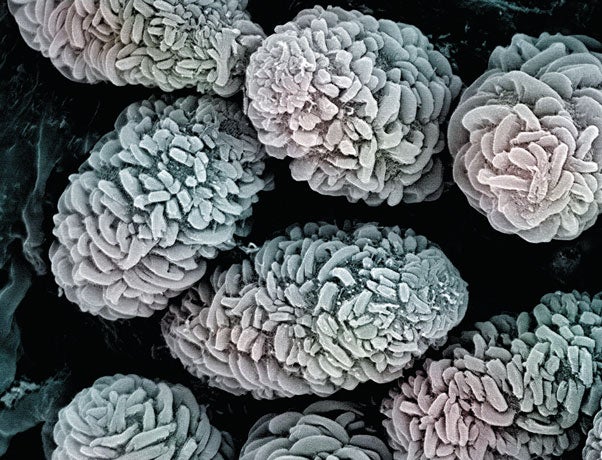The other life-form: how fungi helped plant life to thrive on land

Fungi came on to land from the sea because their tiny light spores were so easily blown about by the wind.
They arrived at about the same time as the earliest plants started to grow on the shores. Since then fungi have developed into a huge variety of life-forms, ranging from the smallest to the largest living things on Earth. Small fungi are just one cell. Yeast is an example, used in cooking all over the world to make bread. It grows by using a process called fermentation, which converts sugar into alcohol and carbon dioxide. Most fungi live underground. They have elaborate networks of hairs, called hyphae, that gather together in clumps called mycelia. A mushroom or toadstool, which most people think of as a fungus, is simply the fruit of the mycelium which occasionally pops up above the ground to spread spores so that it can reproduce.
Fungi can have massive mycelia. In fact, the largest living thing on Earth today is a fungus. Found recently in the American state of Michigan, this hairy beast stretches underground for over 5km, and is estimated to weigh more than 10 tons. It is also one of the Earth's longest survivors, having lived for well over 1,500 years.
Fungi are the world's ecological dustmen. They process and digest dead and decaying matter, from the leaves on the ground to the dead skin in between your toes. When human dustmen take away rubbish it is often just burned or thrown into a deep pit in the ground. Nature's dustmen, the fungi, not only rot away the dead rubbish of life, but turn it into materials rich in nutrients that fertilise plants and trees to help them grow. Fungi are vital links in the Earth's ongoing cycle of renewal – of life and death.
As so often in nature, different groups of living things team up to mutual benefit. The fungus passes on some of the nutrients and water it gathers to the tree and in return the tree feeds the fungus with sugars produced by its leaves. In this way the tree's capacity for gathering water and nutrients is dramatically increased, and the fungus gets fed. Sometimes a single fungus lives underground and attaches itself to many trees – so in this way the trees are actually connected together, linked up in a chain as if poised for a medieval dance. This relationship is called mychorriza. It has been estimated that 80 per cent of all flowering plants today have some sort of mutually beneficial relationship with underground fungi.
Subscribe to Independent Premium to bookmark this article
Want to bookmark your favourite articles and stories to read or reference later? Start your Independent Premium subscription today.

Join our commenting forum
Join thought-provoking conversations, follow other Independent readers and see their replies